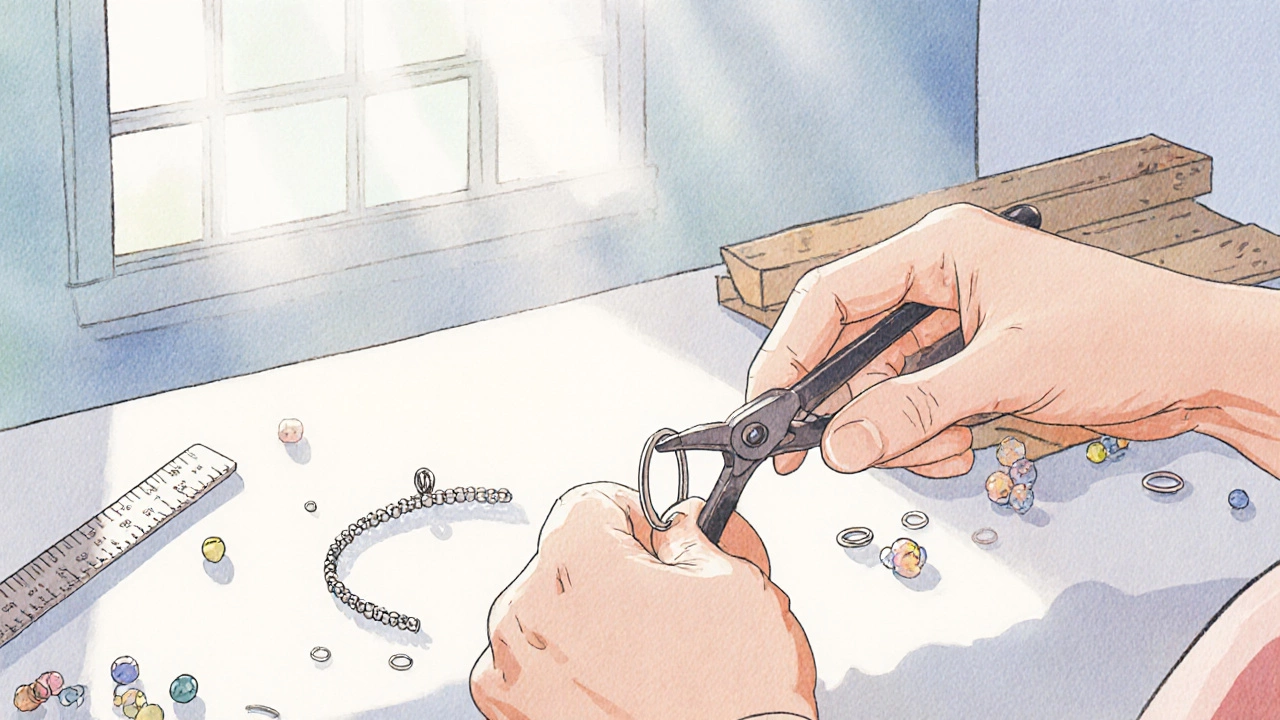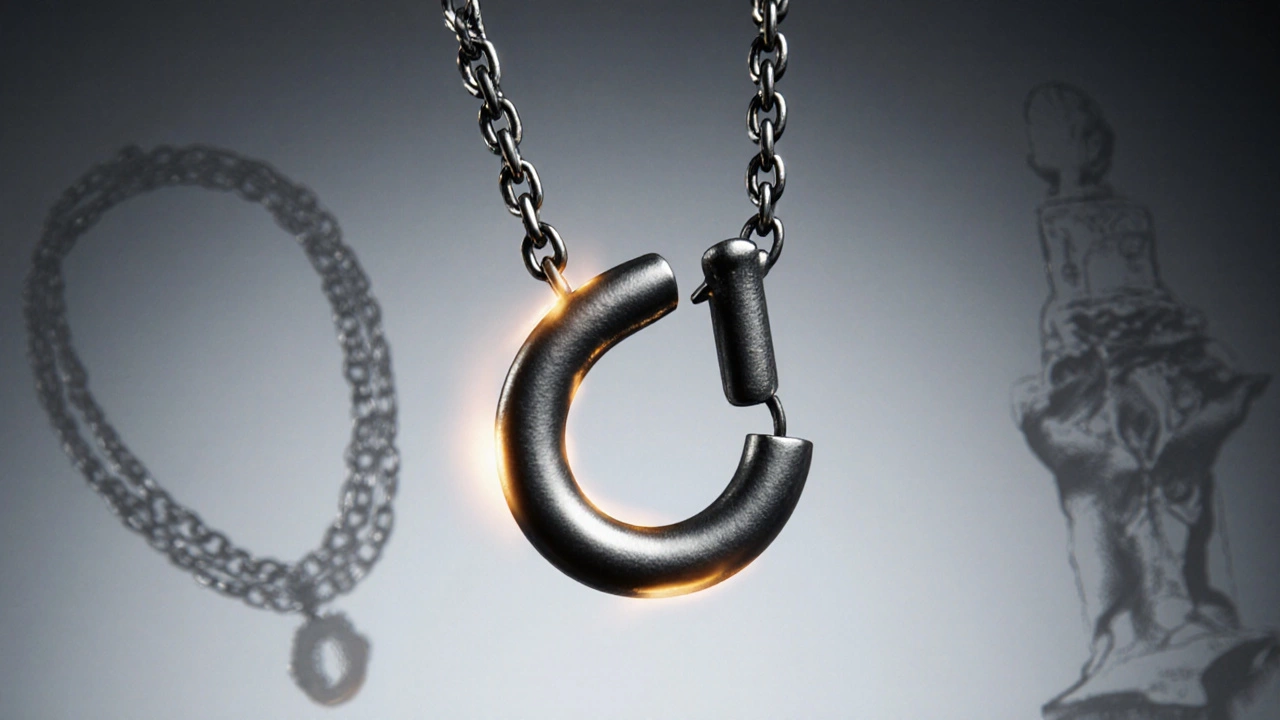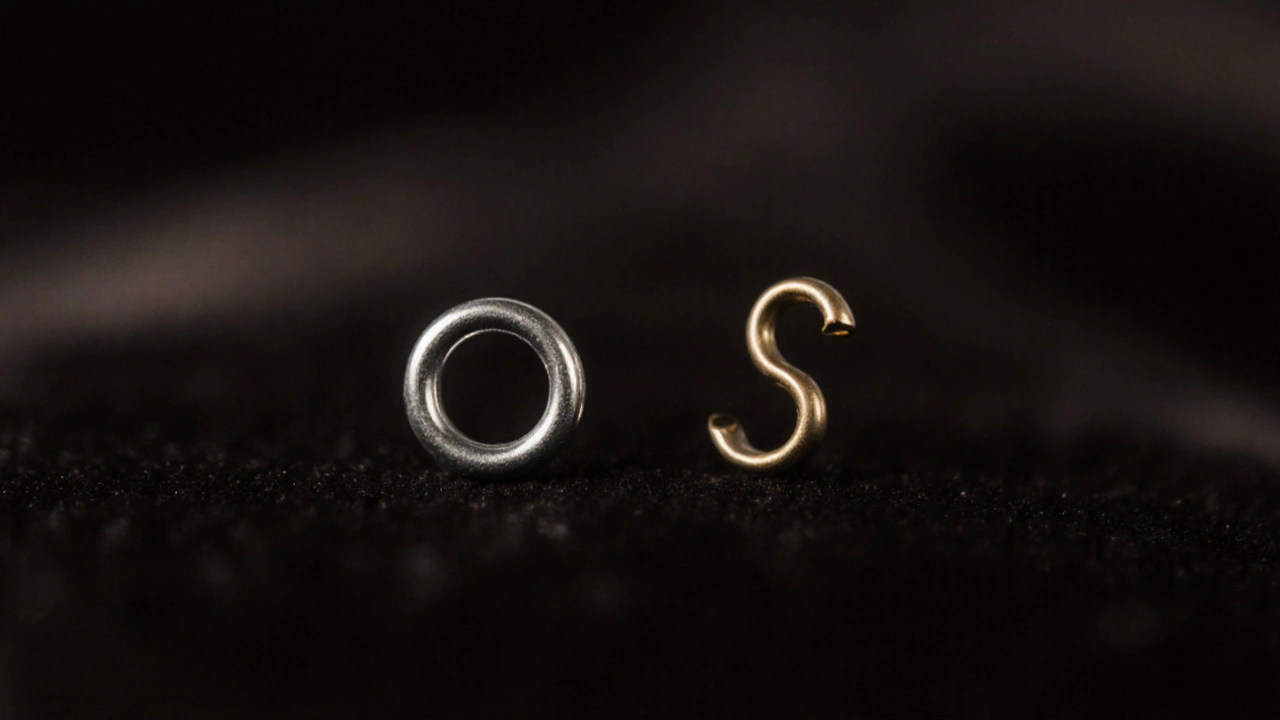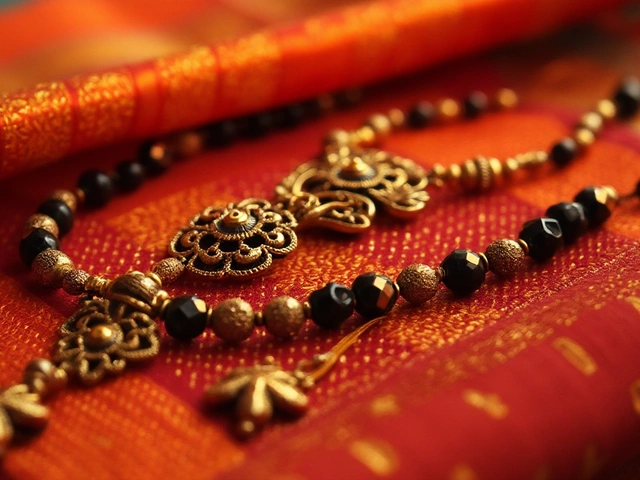Ever stared at a tiny metal loop and wondered whether it’s a jump ring a closed circular wire used to connect jewelry components or a split ring a split‑open wire that can be twisted shut for added security? You’re not alone. Crafters, hobbyists, and even seasoned jewelers mix them up, which can lead to weak links or pieces that fall apart. This guide pulls apart the confusion, shows when to pick each, and gives you a handy checklist so you never guess again.
What a Jump Ring Actually Is
A jump ring is a tiny, seamless circle, usually 0.5mm to 3mm in diameter, made from copper, brass, sterling silver, gold‑filled, or stainless steel. Because the ends are welded or soldered, the ring stays closed forever unless you cut it open. In jewelry making the craft of creating wearable pieces from raw materials, jump rings are the workhorse for attaching charms, dangles, clasps, or strands of beads.
What a Split Ring Actually Is
A split ring looks almost the same as a jump ring, but its ends are left slightly apart-think of a tiny “C” shape. The gap lets you twist the ring shut after you thread it onto a component. Split rings are often made from the same metals but are preferred for heavy‑weight items like pendant necklaces or metal‑link bracelets because the sewn‑together ends add an extra layer of strength.
Side‑by‑Side Comparison
| Attribute | Jump Ring | Split Ring |
|---|---|---|
| Opening | None (welded) | Small gap (≈0.1mm) |
| Typical Load Capacity | Up to 10g for 1mm size | Up to 30g for 1mm size |
| Common Uses | Charm attachment, beading, small clasps | Pendant loops, heavy chains, chain‑to‑chain joins |
| Security | Medium - can be pried open | High - gap closes naturally |
| Ease of Use | Very easy, no twisting needed | Requires twisting tool or pliers |
When to Choose a Jump Ring
- Attaching lightweight charms or tiny beads where a subtle look matters.
- Connecting a spring‑clasp to a delicate chain - the closed loop won’t add bulk.
- When you need to work quickly; no extra tool beyond basic pliers.
Because the ring stays closed, you can string multiple jump rings together to create a flexible link (often called a “chain of jump rings”). This trick is popular among artisans people who hand‑craft jewelry and related items who want a custom‑length chain without buying pre‑made metal links.

When to Choose a Split Ring
- Hanging a heavy pendant that will pull on a thin chain.
- Securing a clasp on a leather cord where movement can stress the joint.
- Creating a loop that needs to stay shut under tension, such as a chain‑to‑chain connector.
The small gap closes naturally under pressure, which means the ring becomes harder to open accidentally. If you’re making a statement necklace with multiple layers, split rings give you peace of mind that the layers won’t separate.
How to Open and Close Each Ring Properly
Even tiny rings need the right technique, otherwise you risk damaging them.
- Grab two flat‑nose pliers; avoid rounded tips that can round the ends.
- For a jump ring, gently twist the ring sideways until you see a tiny gap-don’t pull the ends apart.
- Slide the component through, then twist back to its original shape.
- For a split ring, pull the two ends apart just enough to thread the part, then release. The ring will snap shut.
Practice on a spare ring first. If the metal bends, you probably used too much force-switch to a softer metal like brass or use a ring‑opening tool.
Material Matters
Not all metals behave the same way. Here’s a quick rundown:
| Metal | Jump Ring | Split Ring |
|---|---|---|
| Copper/Brass | Easy to shape, affordable, can tarnish. | Strong enough for most DIY projects. |
| Stainless Steel | Highly resistant to corrosion, harder to open. | Excellent for heavy loads, but may need a stronger plier. |
| Sterling Silver | Beautiful shine, soft - easy to bend. | Works well for bridal pieces where aesthetics matter. |
| Gold‑filled | Looks like gold, cost‑effective, durable. | Great for premium designs that need extra security. |
If you’re selling to customers, match the ring’s metal to the overall piece. A gold‑filled split ring on a gold‑filled pendant keeps the look consistent.
Common Mistakes and How to Avoid Them
- Using a jump ring for a heavy pendant. The ring may distort or open under weight. Switch to a split ring or increase the ring size.
- Trying to force a split ring closed with too much torque. You can flatten the ends, making the ring weak. Use smooth pliers and apply even pressure.
- Choosing the wrong diameter. A ring that’s too small creates a tight knot; too large adds unnecessary bulk. Measure the component’s thickness and add 1‑2mm.
- Skipping a head‑to‑head test. Before final assembly, pull on the finished piece to see if the ring holds.

Quick Reference Checklist
- Identify the weight of the component you’re attaching.
- Pick a metal that matches the rest of the piece.
- Choose jump ring for lightweight, decorative links; split ring for heavy, load‑bearing links.
- Use flat‑nose pliers, twist sideways, never pull apart.
- Test the finished piece by gently tugging before sealing.
Where to Source Quality Rings
Reputable supply houses offer rings in bulk with size charts. Look for these traits:
- Consistent gauge - usually 20‑28AWG for most jewelry.
- Finish - polished, hammered, or antique, depending on design.
- Packaging - individual sleeves prevent scratching.
Online marketplaces often list “jump ring sets” and “split ring kits.” Read reviews to ensure the metal isn’t plated over a weak base.
Wrapping Up: The Bottom Line
Jump rings and split rings solve the same problem - connecting parts - but they do it in different ways. Jump rings are quick, low‑profile, and perfect for light work. Split rings add a built‑in safety lock for heavier, stress‑bearing pieces. Knowing the load, material, and aesthetic goal lets you pick the right one every time.
Frequently Asked Questions
Can I use a jump ring for a necklace clasp?
Yes, as long as the clasp isn’t heavy. A 1mm sterling silver jump ring comfortably holds a standard spring‑clasp. If the clasp has a big metal bail, opt for a split ring or a larger jump ring.
What size jump ring should I use for a 5mm bead?
A 1mm diameter jump ring works well. It slides over the bead without crushing it and keeps the strand flexible.
Do split rings rust?
If the split ring is stainless steel or gold‑filled, it resists rust and corrosion. Plain brass can develop a patina over time, which some designers actually like for a vintage look.
How many jump rings can I link together safely?
There’s no hard limit, but each added ring adds a tiny amount of weakness. For chains longer than 30cm, consider using a pre‑made metal chain instead of a long string of jump rings.
Is there a tool specifically for opening jump rings?
A jump ring opener (a small V‑shaped plier) lets you twist without pulling the ends apart. It’s handy for delicate work and reduces the risk of bending the ring.



